- Home
- Ian Buruma
Theater of Cruelty
Theater of Cruelty Read online
THIS IS A NEW YORK REVIEW BOOK
PUBLISHED BY THE NEW YORK REVIEW OF BOOKS
Copyright © 2014 by Ian Buruma
Copyright © 2014 by NYREV, Inc.
All rights reserved, which includes the right to reproduce this book or portions thereof in any form whatsoever.
Published by The New York Review of Books, 435 Hudson Street, Suite 300, New York NY 10014
www.nyrb.com
The David Bowie lyrics in Chapter 19 are © Used by Permission
The Library of Congress has catalogued the hardcover edition of this book as follows:
Buruma, Ian.
Theater of cruelty: art, film, and the shadows of war / by Ian Buruma.
pages cm. — (New York Review books collections)
ISBN 978-1-59017-777-8 (alk. paper)
1. World War, 1939-1945—Motion pictures and the war. 2. World War, 1939-1945—Art and the war.
3. World War, 1939-1945—Literature and the war. 4. War films—History and criticism. 5. National socialism in motion pictures. 6. Violence in motion pictures. 7. War in art. 8. National socialism in art. 9. Violence in art. I. Title.
D743.23.B87 2014
791.43′658405343—dc23
2014005184
ebook ISBN: 978-1-59017-812-6
v3.1
For
Jim Conte
Contents
Cover
Title Page
Copyright
Dedication
Introduction
1 The Joys and Perils of Victimhood
2 Fascinating Narcissism: Leni Riefenstahl
3 Werner Herzog and His Heroes
4 The Genius of Berlin: Rainer Werner Fassbinder
5 The Destruction of Germany
6 There’s No Place Like Heimat
7 The Afterlife of Anne Frank
8 Occupied Paris: The Sweet and the Cruel
9 The Twisted Art of Documentary
10 Ecstatic About Pearl Harbor
11 Suicide for the Empire
12 Eastwood’s War
13 Robbed of Dreams
14 The Catty Chronicler: Harry Kessler
15 The Believer
Illustrations
16 The Last Bengali Renaissance Man
17 The Way They Live Now: Mike Leigh
18 The Great Art of Embarrassment
19 The Invention of David Bowie
20 Dressing for Success
21 The Circus of Max Beckmann
22 Degenerate Art
23 George Grosz’s Amerika
24 Mr. Natural
25 Obsessions in Tokyo
26 A Japanese Tragedy
27 Virtual Violence
28 AsiaWorld
Sources
Introduction
PEOPLE SOMETIMES SAY to me: “You write about so many things.” I think this is meant kindly and I take it as a compliment. But there is no special merit in writing about a large number of topics, as opposed to mining fewer veins ever more profoundly. I suppose the main reason for my relatively wide range of subjects is that I am naturally curious and easily bored.
Even though the subjects that pique my interest may be diverse, I do, however, have certain preoccupations, or passions, that I return to, like a dog to a favorite tree. (The none too complimentary word Germans use for a dilettante, who pees here, there, and everywhere, like a wandering hound, is Pinkler.) It would do me little good to start going too deeply into the reasons why I go back to certain concerns. That type of self-analysis can easily lead to self-consciousness and turn off the verbal tap.
But a limited number of personal interests have helped to lend a certain shape to this book of essays. First of all, I am fascinated by what makes the human species behave atrociously. Animals kill other animals for food, and some animals turn on their own kind out of rivalry. But only humans commit acts of extreme and often senseless violence, sometimes out of malign pleasure.
This interests me partly because, like most people, I fear violence. And one tries, perhaps illogically, to make sense of violence that appears to have none. Some cope with their fears by looking away. My own tendency is the opposite: when I see a big rat slithering along the rails in the New York subway, I cannot keep my eyes off it, mesmerized by the sight of something I dread.
So it is with other forms of horror: fear and fascination are disconcertingly close. I am not a believer in devils. Evil deeds are often committed by people who have convinced themselves that they are doing something good. When Heinrich Himmler told his audience of SS officers in Posen in 1943 that “exterminating” the Jews was a necessary duty carried out “for the love of our people,” he was most probably sincere. No doubt he reveled in his own power, but I don’t think he was evil for the sake of being evil. Himmler was not Satan but a repellent human being with the means to put mad and murderous fantasies into practice. And he had millions to do the dirty work, whether out of conformism or bloodlust. Some of these killers, in other circumstances, would have been perfectly normal people who wouldn’t have hurt a fly.
I was born five years after the end of World War II in a country that had been conquered and then occupied by Nazi Germany, to a father who had been forced to work in a German factory and a mother who was Jewish, so it was easy when I grew up to take the moral high ground. I was born among the good guys. It was the Germans who were evil. Later, more awareness that German occupation had given license to many non-Germans in Europe to be actively complicit in Nazi crimes began to blur the distinctions between good and bad.
A common fixation among people of my generation, who grew up in the shadow of the war, is how we might have behaved under severe pressure. Would I have been brave enough to risk my life in the resistance? Would I have kept my mouth shut under torture? These are unanswerable questions. But I am less interested in them than in a darker question, which is no easier to answer: What are the chances, in certain conditions, of me behaving atrociously?
The question of how a civilized, highly educated people, like the Germans in the 1930s, could follow a murderous demagogue into an abyss of moral depravity will never let go of me. But I am well aware that those Germans who followed Hitler were not unique. There are no eternal good guys or bad guys. Nor do I do take the easy cynical view that there is an evil Nazi in all of us, waiting to get out. I am convinced, however, that many people, if given the opportunity to wield absolute power over other human beings, will abuse it. Unlimited authority, often cloaked in the moralism of a great cause, leads invariably to the torture chamber.
A way to deal with our fearful fascination with power and cruelty and death is to act it out vicariously, in art. Hence the title of this book. This is not to say that all great art or drama has to deal with these sinister themes. But the art and drama that interest me most reveal something of what lies beneath the varnish of what we call civilized behavior. Which is one reason, I suppose, why I love the German art of the 1920s. My favorite artists of that time, such as Max Beckmann, George Grosz, or Ernst Ludwig Kirchner, witnessed the barbarism of which man is capable with their own eyes, in the trenches and field hospitals of World War I and later in the streets of Berlin, a capital made skittish by the horrors of war, poverty, crime, and moral collapse. They looked into the abyss and made art of what they saw.
Germany’s wartime ally, Japan, is the other country responsible for some of the worst atrocities in the twentieth century. Many theories have been put forward about the possible reasons why: the “samurai spirit,” a streak of “Oriental cruelty” unrestrained by Christian guilt, or a culture of extreme insularity that loses its moral compass outside its own national borders. None of these explanations seems very convincing to me. The barbarism of Japanese troops in
China and other parts of Asia arose from a specific set of circumstances, which doesn’t excuse the brutality but needs to be properly understood.
My own reasons for spending six years in Tokyo during the 1970s had nothing to do with the war. Not quite knowing what to do at university, I chose to study Chinese language and history, subjects about which I knew nothing. The knowledge I hoped to acquire seemed appealingly exotic and of possible practical use. However, this was in the very early 1970s, when the utility of my chosen subject was not apparent. The Cultural Revolution was not yet over. Contemporary China was almost as remote as the moon. The idea that one might travel freely in China was no more than a fantasy.
While studying Chinese, I saw more and more Japanese films, as well as modern theater productions, in Amsterdam, Paris, and London. Japan looked a great deal more attractive than China in those days, especially for a young man bent on adventure. And so I applied for a scholarship to study cinema at a Japanese film school, which was part of the arts department of a large university in Tokyo.
The most common points of foreign interest in Japan, such as martial arts or Zen Buddhism, always left me rather cold. What I found most intriguing about Japanese cinema or theater, both traditional and modern, as well as my favorite writers, was precisely what I liked about German art of the Weimar years. The Japanese, perhaps more than other people, have a penchant in their arts for revealing our darker impulses that lurk under the surface of civilized behavior. That the daily social life of Japan is governed by stricter and more elaborate rules of etiquette does nothing to contradict this; indeed the two tendencies are probably linked. The more people feel constrained by rules and manners designed to limit human conflict or the potential risks of our animal impulses, the more they feel the need to transform them into art. Japanese artists, writers, and dramatists have gone further than most in exploring the twin themes of sex and death. To me, this was never a mark of exoticism or peculiar “Oriental” cruelty but of a common humanity.
I did not stay in Japan for more than six years. Curiosity and the danger of boredom took me elsewhere, to Hong Kong, London, Berlin, and eventually New York. I did not want to be an “Asia hand,” forever explaining the manners and mores of countries about which most of my readers would know even less than I did.
Other topics covered in this book came from my enthusiasms. It is often amusing to read (and write) critical put-downs, but one of the things I learned from Susan Sontag is that admiration is both harder to express intelligently and longer lasting. So here it is, a collection of my various fascinations. I owe many thanks to Michael Shae for editing this book. All the pieces appeared originally in The New York Review of Books, whose editor, Robert Silvers, has been the main guiding force of my literary life. Together, I hope, they will tell you something about the artists and filmmakers I have admired and the topics that have arrested me, as well as a few things, for better or for worse, about the author himself.
1
THE JOYS AND PERILS OF VICTIMHOOD
IN HIS BOOK The Seventh Million, the Israeli journalist Tom Segev describes a visit to Auschwitz and other former death camps in Poland by a group of Israeli high school students. Some students are from secular schools, others from religious ones. All have been extensively prepared for the visit by the Israeli Ministry of Education. They have read books, seen films, and met survivors. Nonetheless, after their arrival in Poland, Segev notes a degree of apprehension among the students: Will they suddenly collapse? Will they emerge from the experience as “different people”?1 The fears are not irrational. For the students have been prepared to believe that the trip will have a profound effect on their “identities,” as Jews and as Israelis.
These regular school tours to the death camps are part of Israeli civic education. The political message is straightforward: Israel was founded on the ashes of the Holocaust, but if Israel had already existed in 1933 the Holocaust would never have happened. Only in Israel can Jews be safe and free. The Holocaust was proof of that. So the victims of Hitler died as martyrs for the Jewish homeland, indeed as potential Israeli citizens, and the State of Israel is both the symbol and the guarantor of Jewish survival.
This message is given further expression, on those bleak and wintry spots where the Jewish people came close to annihilation, by displays of the Israeli flag and singing of the national anthem. But Segev noticed a peculiarly religious, or pseudoreligious, aspect to the death camp visits as well. The Israeli students in Poland, in his view, were like Christian pilgrims in Jerusalem, oblivious to everything except the sacred places. They marched along the railway tracks in Auschwitz-Birkenau like Christians on the Via Dolorosa. They brought books of prayers, poems, and psalms, which they recited in front of the ruined gas chambers. They played cassette tapes of music composed by a Holocaust survivor named Yehuda Poliker. And at one of the camps, a candle was lit in the crematorium, where the students knelt in prayer.
Some call this a form of secular religion. The historian Saul Friedlander was harsher and called it a union of kitsch and death. I felt the pull of kitsch emotion myself on my only visit to Auschwitz, in 1990. By kitsch I don’t mean gaudiness or camp but rather an expression of emotion that is displaced, focused on the wrong thing, or, to use that ghastly word properly for once, inappropriate. I am not the child of Holocaust survivors. My mother was Jewish, but she lived in England, and no immediate relations were killed by the Nazis. And yet even I couldn’t escape a momentary feeling of vicarious virtue, especially when I came across tourists from Germany. They were the villains, I the potential victim. But for the grace of God, I thought, I would have died here too. Or would I? An even more grotesque calculation passed through my mind: How did I fit into the Nuremberg laws? Was I a Mischling of the first degree, or the second? Was it enough to have two Jewish grandparents, or did you need more to qualify for the grim honor of martyrdom? When would I have been deported? Would I have been deported at all? And so on, until I was woken from these smug and morbid thoughts by the sight of a tall man in American Indian dress, followed by young Japanese, Germans, and others of various nationalities banging on tambourines, yelling something about world peace.
All this seems far away from Primo Levi’s fears of oblivion. One of the cruelest curses flung at the Jewish victims by an SS officer at Auschwitz was the promise that even if one Jew survived the camp no one would believe what had happened to him or her. The SS man was quite wrong, of course. We cannot imagine the victims’ torment, but we believe it. And far from forgetting the most recent and horrible chapter in the long book of Jewish suffering, the remembrance of it grows in volume the further the events recede into the past. Holocaust museums and memorials proliferate. Holocaust movies and television soap operas have broken box-office records. More and more people visit the camps, whose rotting barracks have to be carefully restored to serve as memorials and movie sets.
In a curious way, the Jewish Holocaust has been an inspiration to others. For almost every community, be it a nation or a religious or ethnic or sexual minority, has a bone to pick with history. All have suffered wrongs, and to an increasing and in my view alarming extent, all want these wrongs to be recognized, publicly, ritually, and sometimes financially. What I find alarming is not the attention we are asked to pay to the past. Without history, including its most painful episodes, we cannot understand who we are, or indeed who others are. A lack of historical sense means a lack of perspective. Without perspective we flounder in the dark and will believe anything, no matter how vile. So history is good, and it is right that victims who died alone and in misery should be remembered. And minorities are still vulnerable to persecution, Christians by Muslims, Sunnis by Shiites, Shiites by Sunnis, Muslim Uighurs by Han Chinese, Bosnians by Serbs, and on and on. What is alarming, however, is the extent to which so many minorities have come to define themselves above all as historical victims. What this reveals is precisely a lack of historical perspective.
Sometimes it is as if everyone wants
to compete with the Jewish tragedy, in what an Israeli friend once called the Olympics of suffering. Am I wrong to detect a hint of envy when I read that Iris Chang, the Chinese-American author of a best seller about the 1937 Nanking Massacre, wishes for a Steven Spielberg to do justice to that event? (Her book bears the subtitle The Forgotten Holocaust of World War II.2) It is, it appears, not enough for Chinese-Americans to be seen as the heirs of a great civilization; they want to be recognized as heirs of their very own Holocaust. In an interview, Chang related how a woman came up to her in tears after a public reading and said that Chang’s account of the massacre had made her “feel proud to be Chinese-American.” A massacre seems a peculiar source of pride.
Chinese-Americans are not the only ones to be prey to such emotions. The idea of victimhood also haunts Hindu nationalists, Armenians, African-Americans, American Indians, Japanese-Americans, and homosexuals who have adopted AIDS as a badge of identity. Larry Kramer’s book on AIDS, for example, is entitled Reports from the Holocaust. Even the placid, prosperous Dutch, particularly those now in their teens and twenties, much too young to have experienced any atrocity at all, have narrowed down their historical perspective to the hardship suffered under German occupation in World War II.3 This is no wonder, since pre-twentieth-century history has been virtually abolished from the curriculum as irrelevant.
The use of Spielberg’s name is of course telling, for the preferred way to experience historical suffering is at the movies. Hollywood makes history real. When Oprah Winfrey played a slave in the movie Beloved, she told the press that she collapsed on the set, crying and shaking. “I became so hysterical,” she said, “that I connected to the raw place. That was the transforming moment. The physicality, the beatings, going to the field, being mistreated every day was nothing compared to the understanding that you didn’t own your life.”4 And remember, this was just a movie.
My intention is not to belittle the suffering of others. The Nanking Massacre, during which tens and perhaps hundreds of thousands of Chinese were slaughtered by Japanese troops, was a terrible event. The brutal lives and violent deaths of countless men and women from Africa who were traded as slaves must never be forgotten. The mass murder of Armenians in the Ottoman Empire cannot be denied. Many Hindu temples and Hindu lives were destroyed by Muslim invaders. Women and homosexuals have been discriminated against. The murder of a gay college student in Laramie, Wyoming, is a brutal reminder of how far we have yet to go. And whether or not they are right to call Columbus a mass murderer on his anniversary day, there is no doubt that the American Indians were killed in large numbers. All this is true. But it becomes problematic when a cultural, ethnic, religious, or national community bases its communal identity almost entirely on the sentimental solidarity of remembered victimhood. For that way lies historical myopia and, in extreme circumstances, vendetta.

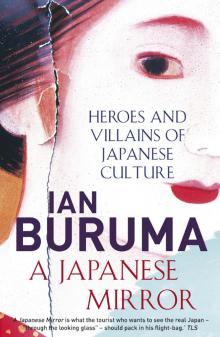 A Japanese Mirror
A Japanese Mirror Taming the Gods
Taming the Gods The China Lover
The China Lover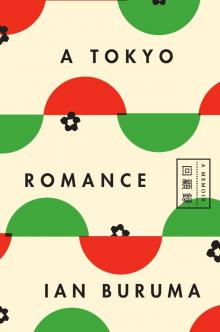 A Tokyo Romance
A Tokyo Romance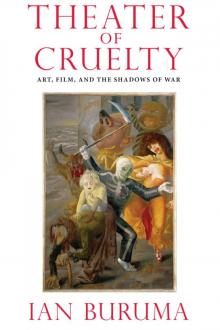 Theater of Cruelty
Theater of Cruelty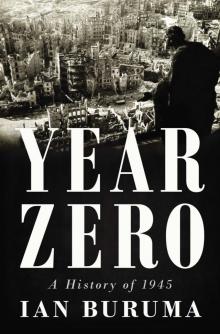 Year Zero
Year Zero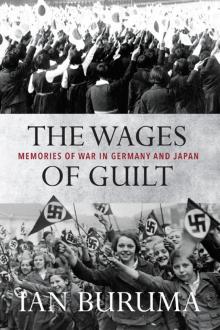 The Wages of Guilt
The Wages of Guilt Murder in Amsterdam
Murder in Amsterdam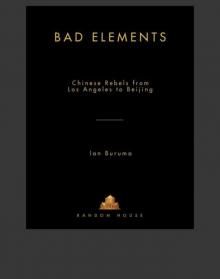 Bad Elements
Bad Elements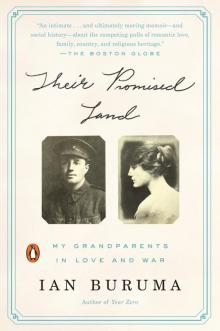 Their Promised Land
Their Promised Land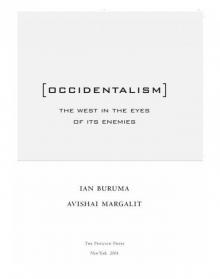 Occidentalism
Occidentalism Anglomania
Anglomania Inventing Japan: 1853-1964 (Modern Library Chronicles)
Inventing Japan: 1853-1964 (Modern Library Chronicles)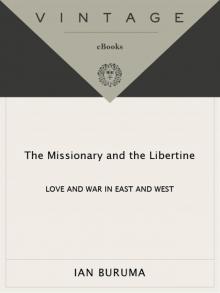 The Missionary and the Libertine
The Missionary and the Libertine